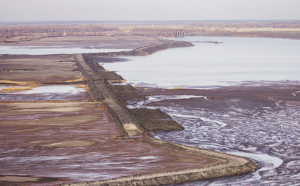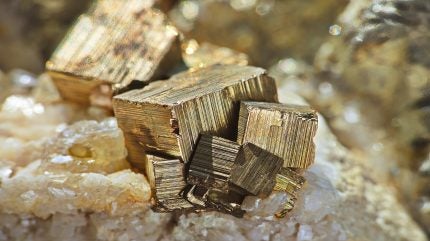While producing mine waste and tailings is unavoidable, there are ways to ensure they are removed and handled sustainably.
Waste is an inevitable part of the mining cycle.
As thousands of tonnes of ore are processed each day across the industry, not all of that ore will end up being exported or used, and will instead become waste.
While mine waste may be a fact of the industry, what is subject to change is the way in which waste is dealt with.
Australia’s Department of Climate Change, Energy, the Environment and Water’s ‘National Waste Report 2022’ showed that the country’s mining sector generated substantial waste during 2020–21.
During this time Australia’s total mining waste was estimated at 620 megatons (Mt), a 118Mt increase from the 502Mt recorded during 2018–19.
About 96 per cent of the mining waste produced was deposited in tailings dams, which are used to store by-products of mining operations after the ore is separated from the waste.
While tailings dams are common ways of storing mine waste, they are usually highly toxic. And if any mine waste is mismanaged, it can lead to environmental and human harm.
Australian Mining looks at three ways in which mining operations can reduce and manage waste.
The GISTM
In August this year, major miners Rio Tinto, Glencore and Anglo American released information on their tailings facilities to the public for the first time.
The reports included information on how the companies plan to meet the global industry standard on tailings management (GISTM).
The GISTM is directed at mining operators and applies to tailings facilities, whether they already exist or are set to be built.
A set of 15 principles, including 77 individual requirements for tailings facilities, operators conduct self-assessments against the requirements before a third party audits the company’s conformance. The results are then published publicly.
Created in August 2020 following the Samarco and Brumadinho dam disasters in 2015 and 2019, respectively, the GISTM makes it clear that extreme consequences to people and the environment from catastrophic tailings facility failures are unacceptable.
“Since the tragic failure of the tailings facility at Brumadinho in Brazil in 2019, the entire industry has been working to improve the way we manage tailings facilities,” Rio Tinto chief technology officer Mark Davies said when announcing information on the company’s tailings.
“Responsible tailings management is critical to ensure the safety of our people and communities and to protect the environment. It is fundamental for our business and social license.
“The GISTM has meant a steep change in how the industry manages its tailings facilities.”
Anglo American and Glencore echoed similar sentiments when announcing their tailings information.
Mining companies such as BHP, Newmont, Newcrest and Sibanye-Stillwater have pledged to implement responsible stewardship of their tailings storage facilities, aligning them with the GISTM.

Repurposing mine waste
In late May, Federal Resources Minister Madeleine King announced the Atlas of Australian Mine Waste, a collaboration between Geoscience Australia and researchers from the School of Engineering at RMIT University and the Sustainable Minerals Institute at the University of Queensland.
An interactive online mapping tool, the atlas was created to provide governments, the resources sector and the community with accurate information about Australian mine tailings, waste rock, smelter residues and related mine waste materials.
King was keen to point out the potential benefits of what has long been considered waste.
“Some of the minerals we need now and into the future may not just be in the ground – they’re also in rock piles and tailings on mine sites around the country,” King said when announcing the atlas.
“These minerals might not have been of interest when first extracted but could now be in hot demand as the world seeks to decarbonise; for example, cobalt in the tailings of old copper mines.
“This new atlas puts these potentially lucrative sites on the map for the first time and may open up new sources of critical materials.”
King said the new publication could help facilitate the discovery of critical minerals in a more efficient and sustainable way.
“Reprocessing rocks and earth that have been previously excavated during mining operations can give new life to old mining towns, create jobs and rejuvenate local economies,” she said.
And it seems to be doing its job. As of May 31 2023, the atlas has identified 1050 sites as possible critical minerals sources that can be used to accelerate the global energy transition.
Reusing existing materials is a key example of a circular economy, which refers to a model of production and consumption involving sharing, recycling and reusing existing materials and products for as long as possible.
“Creating a circular economy for mine residues creates cost-effective benefits through offsetting raw material requirements, reducing the carbon footprint associated with obtaining them, and reducing the volumes of waste and related environmental impacts,” the Minerals Research Institute of Western Australia said.
“It also delivers social benefits, boosting job creation, manufacturing self-sufficiency and opportunities for regional growth.”
Rio Tinto has adopted a circular economy through its aluminium business, where 85 per cent of the waste generated has been used to create new products.
“We have turned anhydrite, a by-product from our Vaudreuil alumina refinery in Canada, into a safe and effective fertiliser for local blueberry growers,” Rio Tinto said on its website.

New technology
As the global mining industry transitions towards a greener future, companies will need innovative technology to support this change.
This of course means miners will need to adapt these new technologies to their mine waste processes to ensure it is managed in a sustainable manner.
BHP and Rio Tinto have long been at the forefront of adopting new technologies, forming a partnership in October 2022 to accelerate the development of tailing technologies and management such as tailings dewatering and transport technologies, chemical amendment, and dust mitigation.
In May 2023, both miners invited expressions of interest for a range of new tailings technology partners.
The majors will continue to collaborate to identify a portfolio of tailings management partners with whom they can work to accelerate the development of technologies that have the potential to increase water recovery, and reduce potential safety risks and environmental footprints associated with tailings storage facilities.
“There are so many innovative thinkers out there and we want to bring them in as partners to help us improve in this critical area for safety and sustainability of our operations,” BHP head of sustainability innovation Ingrid Oyarzun said when announcing the partnership.
Comments from Rio Tinto chief advisor of research and development Saskia Duyvesteyn paralleled those from Oyarzun.
“We want to tap into the wealth of great ideas and innovations we know are out there and work together to find ways to improve safety and reduce the environmental footprint of tailings facilities,” Duyvesteyn said.
As the future of mine waste management continues to develop, one thing remains clear: major mining companies are committed to ensuring the waste they produce is handled with care.




